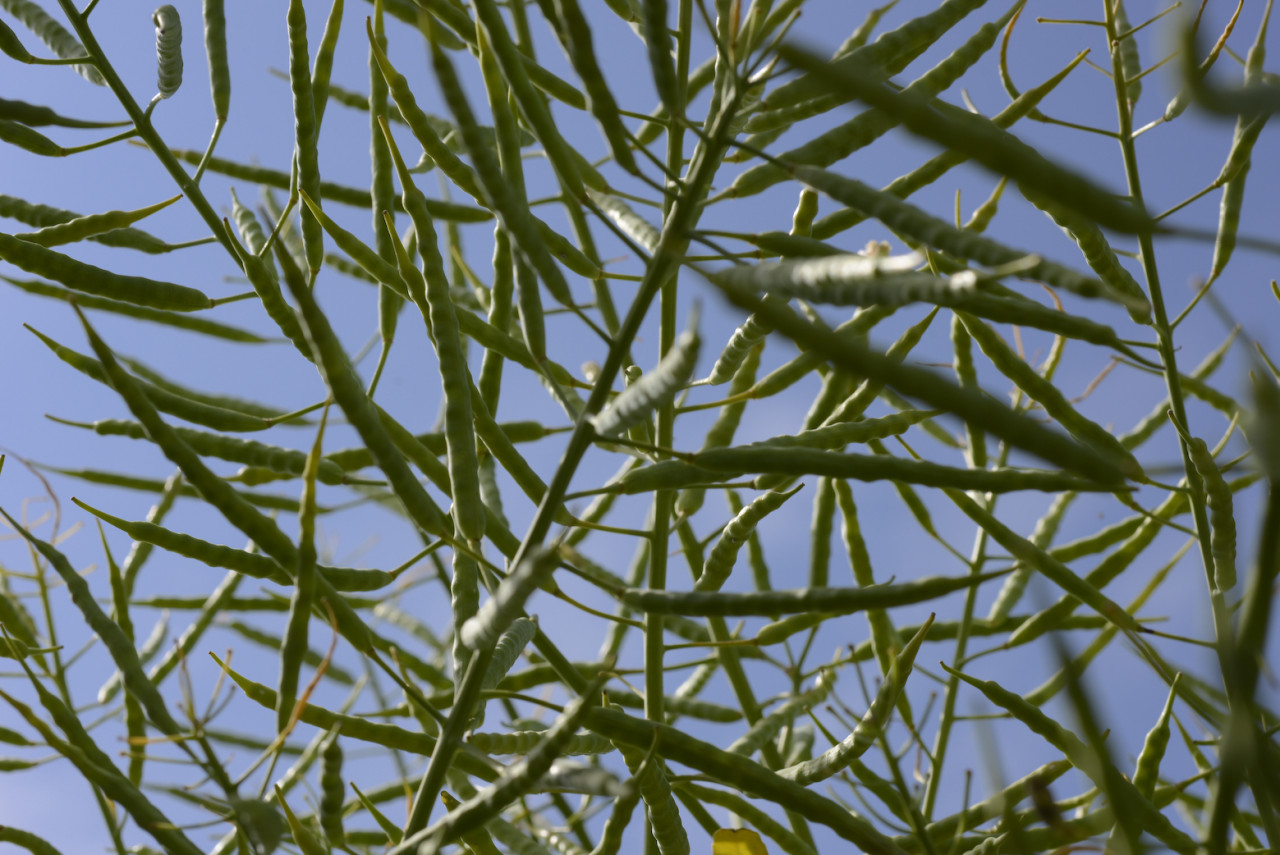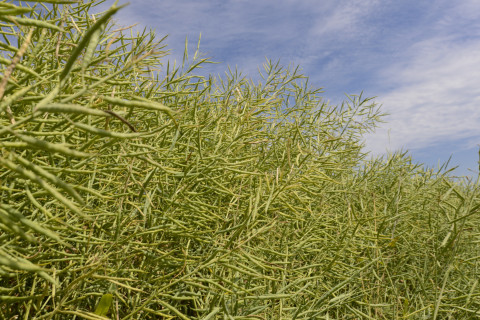The value of pod sealants for oilseed rape
The economics of growing oilseed rape have fundamentally changed over the last few years. Throughout this period, we have seen its value move from approximately £320/t in harvest 2020, to £440/t in 2021, to the heights of 2022 of £900/t. Currently, this has come back to £550/t for harvest. The crop has never been so valuable.
All of this presents us with a challenge for this harvest – the pressure to keep every grain of oilseed rape in good condition is probably higher than it's ever been. Suddenly, 100kg (0.1t) of crop is worth £55 and this makes anything we can do to improve or maintain harvestable yield an important process.
Mitigating risk
Every year, there are usually a few risks during the harvest management period. Often growers produce a fantastic looking crop but the longer it stands in the field in the lead up to harvest, the higher the risk that those delicate pods could be damaged by heavy rainfall or worse, a hailstorm. This season, pod sealants (or 'hail insurance') will be a vital approach.
The benefits of pod sealants
As you read this, some first applications of pod sealants will be being applied already. They are certainly not a new technology but for a reasonable cost - 33kg of OSR/ha for the product – they can be a valuable part of your crop's armoury.
With the use of pod sealants at the desiccant spray, you get the benefit of:
- Yield improvement of 0.2t/ha – less pods shatter in the top of the crop and there is a lower risk of pods shattering due to windy conditions or rainfall, both of which cause delays to harvest or shattering of pods.
You may even consider spraying ahead of the desiccant timing as pod sealants can respond better when used during this period. Technically, this is when the crop is 80 – 82 on the BBCH scale or when the pods are fully formed and 'green and bendy'. For the cost of another sprayer application, around 30kg of OSR/ha you get:
- Yield increases of 0.4t/ha – due to less pod shatter as I mentioned in the point above, however, this also applies to the tramlines where, due to the crop being more supple, you get less shatter.
- You also 'lay' the crop down and as long as it is sprayed the same as it was at the desiccant timing, you get far less pod shatter when desiccating the crop fully.
By adding together this extra spray pass and the pod sealant you see a ROI of 6:1 or an MOIC of £190/ha.
Extra precaution through varieties with pod shatter resistance
There are plenty of varieties that have pod shatter resistance as a trait. However, given the season it would be pertinent to use a pod sealant regardless to ensure a 'belt and braces' level of safety. The economics I mentioned earlier show that it's important to take these extra precautions. Additionally, even if the potential yield improvements were halved, the economics still stack up.
Pod shatter resistance is found in hybrid varieties only so all conventional varieties should be considered for pod sealants this season. Please check either the AHDB Recommended List, which now shows this information, ask your seed supplier as to whether the variety you have has got pod shatter resistance, or you can find information in our 2022 MyVarieties Seed catalogue. Knowing the traits of your varieties will allow you to target the fields that need treatment (although, as I've said already, I'd strongly recommend that all fields are treated given the extra security it can provide).
If you'd like more information or advice on the use of pod sealants, please get in touch with your local Frontier contact. Alternatively, you can get in touch with us here.
As a subscriber, you’ll receive email alerts each time a new blog is published so you can always stay updated with the latest advice and insights from our experts





Comments